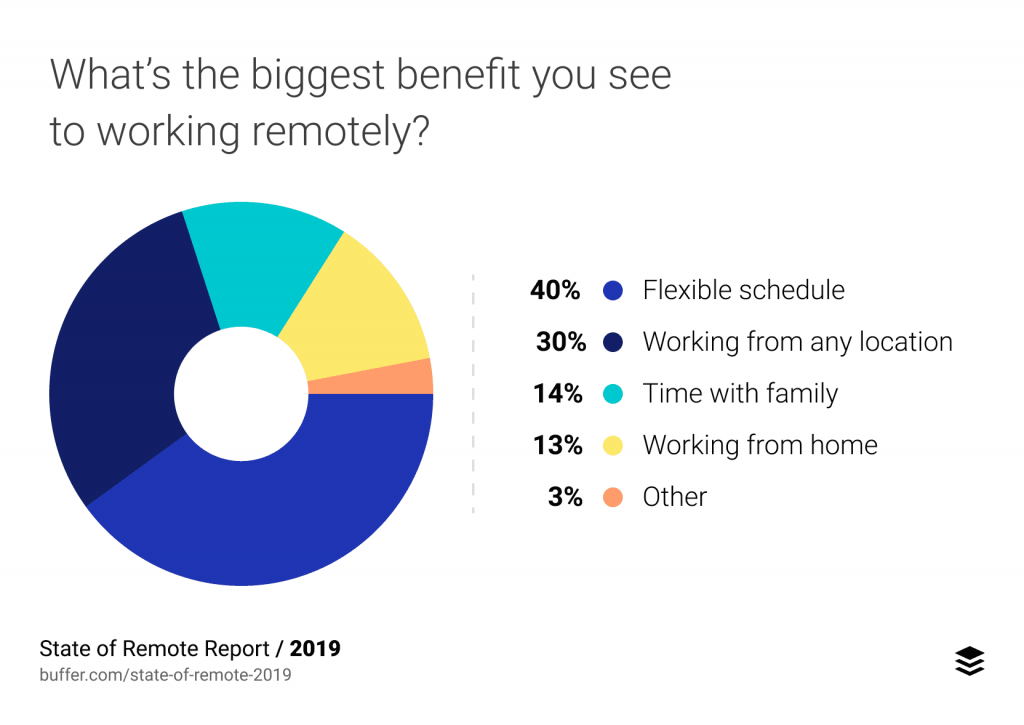Work Trends: The Remote Work Movement

EDITOR’S NOTE: We’re writing a series of posts exploring recent trends that are challenging workplace norms and causing companies to rethink long-standing policies.
When I grew up in Dallas, my dad drove to the office each day to get to his computer and work phone to do his job. Face time actually meant something because the office was the only place you could physically do your job. If you weren’t in your seat, then you literally were not working.
Later, when I entered the workforce around the turn of the century, I wanted to beat my boss into the office and stay until after he left. That’s how I knew I would outperform him. That may sound silly now, but that was the attitude then.
We live in an era now where companies and employees value efficiency and productivity more than superficial measures of output. This transformation has resulted in a variety of trends, including remote work.
According to this Yahoo! Finance article, Virtual Vocations, an online job board for remote work, added 300,000 remote jobs in 2019, which was a company record. Also, a Gallup poll showed that 43% of Americans in 2016 worked remotely compared to 39% four years earlier.
Building A Work Culture Conducive To Remote Work
Thursdays at recruitAbility are work remote days. We want our team to get out and experience Austin. They can choose to plug in at a coffee shop, bar/restaurant, or just work at home. It may sound like an odd day of the week to allow for remote work, but I wasn’t ready to choose Friday or Monday. Call me old-school, but I didn’t want to set us up for a three-day weekend every week.
 Many companies have completely flexible remote work policies, and with the attention that the Coronavirus is receiving, I wouldn’t be surprised to see more companies adopt these standards.
Many companies have completely flexible remote work policies, and with the attention that the Coronavirus is receiving, I wouldn’t be surprised to see more companies adopt these standards.
The key to the remote-work approach is creating a results-based, goal-driven work culture. If you have a performance-based environment where colleagues are held accountable, then there should be less emphasis placed on where people are doing the actual work.
Tools such as Asana help us stay on track with our company objectives, and there are plenty of other resources available that can keep distributed teams aligned.
That said, we supplement Asana with daily stand-up meetings where everybody talks about the most important things they have to accomplish that day. Employees also share if they finished what they said they would the previous day, and if not, what blocked them. This practice is more effective in-person.
What works in our favor relative to our once-a-week remote workday is that the majority of recruitAbility employees have substantial professional experience. When I was right out of college, I benefited from time around my colleagues. It helped me understand workplace norms and learn from watching others. I worry that recent graduates will suffer if companies swing too far the other way and eliminate offices completely.
Beyond remote work, we encourage employees to use their best judgment in terms of how much time they spend in the office. If you close a big deal and want to take the afternoon off, we encourage that. On the flip side, if you’re not hitting your goals, are you doing what is required to get back on track?
If you have a goal-driven mindset, the answer is obvious. That’s why we are so outcome-driven at recruitAbility. Remote work – whether once a week or full-time – does not function well any other way.
Are you introducing any new and innovative workplace policies? Email us at sales@therecruitability.com and we’ll highlight any cool ideas in a subsequent blog post. For more information, check out Toptal’s Remote Playbook.
